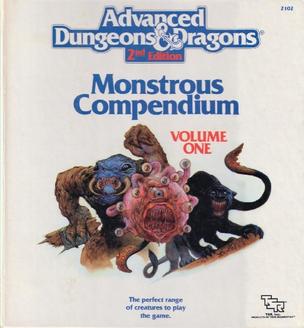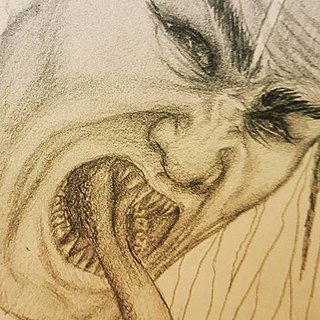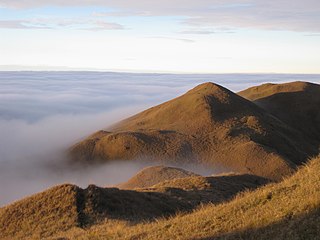Related Research Articles
Forgotten Realms is a campaign setting for the Dungeons & Dragons (D&D) fantasy role-playing game. Commonly referred to by players and game designers as "The Realms", it was created by game designer Ed Greenwood around 1967 as a setting for his childhood stories. Several years later, it was published for the D&D game as a series of magazine articles, and the first Realms game products were released in 1987. Role-playing game products have been produced for the setting ever since, in addition to novels, role-playing video game adaptations, comic books, and the film Dungeons & Dragons: Honor Among Thieves.

In the myths and folk religion of Chinese culture, the Jade Emperor or Yudi is one of the representations of the primordial god.

The manananggal is a mythical creature in the Philippines that is able to separate its upper torso from the lower part of its body. Their fangs and wings give them a vampire-like appearance and makes them look crazy

The Monstrous Compendium is a series of accessories for the Advanced Dungeons & Dragons fantasy role-playing game released from 1989 to 1998. The title was then used for a series of 5th Edition Dungeons & Dragons supplements released on D&D Beyond.

The kallikantzaros is a malevolent creature in Southeast European and Anatolian folklore. Stories about the kallikantzaros or its equivalents can typically be found in Greece, Bulgaria, Turkey, Serbia, Albania, Bosnia, and Cyprus. Kallikantzaroi are believed to dwell underground but come to the surface during the twelve days of Christmas, from 25 December to 6 January.

Aswang is an umbrella term for various shape-shifting evil creatures in Filipino folklore, such as vampires, ghouls, witches, viscera suckers, and transforming human-beast hybrids. The aswang is the subject of a wide variety of myths, stories, arts, and films, as it is well known throughout the Philippines. Spanish colonists noted that the aswang was the most feared among the mythical creatures of the Philippines, even in the 16th century. Although with no specific motive other than harming others, their behavior can be interpreted as an inversion of the traditional Filipino's values. The aswang is especially popular in southern parts of Luzon, and some parts of Mindanao and Visayas, especially the Visayan province of Capiz.
Abeir-Toril is the fictional planet that makes up the Forgotten RealmsDungeons & Dragons campaign setting, as well as the Al-Qadim and Maztica campaign settings, and the 1st edition version of the Oriental Adventures campaign setting.

Philippine mythology is rooted in the many indigenous Philippine folk religions. Philippine mythology exhibits influence from Indonesian, Hindu, Muslim, Shinto, Buddhist, and Christian traditions.
Trolls are fictional monsters in the Dungeons & Dragons roleplaying game.

Descent Into the Depths of the Earth is an adventure module for the Dungeons & Dragons (D&D) fantasy roleplaying game coded D1–2. It was written by Gary Gygax, and combines two previously published modules from 1978, the original Descent into the Depths of the Earth and Shrine of the Kuo-Toa. A sequel to the first two modules, Vault of the Drow, was also published in 1978. All of these D-series modules were produced for use with the 1st edition Advanced Dungeons & Dragons (AD&D) rules.
In the Dungeons & Dragons fantasy role-playing game, a vampire is an undead creature. A humanoid or monstrous humanoid creature can become a vampire, and looks as it did in life, with pale skin, haunting red eyes, and a feral cast to its features. A new vampire is created when another vampire drains the life out of a living creature. Its depiction is related to those in the 1930s and 1940s Hollywood Dracula and monster movies. In writing vampires into the game, as with other creatures arising in folklore, the authors had to consider what elements arising in more recent popular culture should be incorporated into their description and characteristics.
Pedro Penduko is a Filipino fictional comic book character created by National Artist for Literature Francisco V. Coching. The character, who is styled as a folk hero, debuted in the magazine Liwayway in 1954.

Da Adventures of Pedro Penduko is the third and fourth season of the Philippine fantasy TV series Komiks. The third season began airing in the Philippines on September 9, 2006, and ended on April 28, 2007, on the ABS-CBN.

The Bakunawa is a serpent-like dragon in Philippine mythology. It is believed to be the cause of eclipses, earthquakes, rains, and wind. The movements of the Bakunawa served as a geomantic calendar system for ancient Filipinos and were part of the rituals of the babaylan priestess. It is usually depicted with a characteristic looped tail and a single horn on the nose. It was generally believed to be a sea serpent, but are also variously believed to inhabit either the sky or the underworld.
Amalanhig are creatures in Visayan mythology, particularly among Hiligaynon speaking groups. Amalanhig are Aswangs who failed to transfer their monstrosity causing them to rise from their graves to kill humans by biting their necks. Another version that has survived through word-of-mouth recounts that Amanlanhigs are said to chase any living person they found and once they reach them, they would tickle the victim until they die, both of laughter and terror. In order to escape from Amanlanhigs, one runs in zigzag direction since they can only walk in straight direction due to the stiffness of their body. One would also climb trees or high platforms enough to be out of their reach. One would also run into lakes and rivers since Amanlanhigs are scared of deep bodies of water.
Dalaketnon, are the evil engkanto. The Dalaketnons are a race of elf-like creatures in Philippine mythology. In Visayan culture, they were believed to be handsome and beautiful beings resembling nobles and monarchs of Pre-Hispanic Philippines. They reside in Dalakit trees, hence the name Dalakitnon, meaning "from the Dalakit or Dakit tree." This mythological race exhibits sexual dimorphism, with men having light-colored skin and very dark hair, while women have bronze-brown skin and brown hair. Stories describe them with leaf-shaped, pointy ears.

Indigenous Philippine shrines and sacred grounds are places regarded as holy within the indigenous Philippine folk religions. These places usually serve as grounds for communication with the spirit world, especially to the deities and ancestral spirits. In some cases, they also function as safeguards for the caskets of ancestors, as well as statues or other objects depicting divine entities.

Anito, also spelled anitu, refers to ancestor spirits, nature spirits, and deities in the Indigenous Philippine folk religions from the precolonial age to the present, although the term itself may have other meanings and associations depending on the Filipino ethnic group. It can also refer to carved humanoid figures, the taotao, made of wood, stone, or ivory, that represent these spirits. Anito is also sometimes known as diwata in certain ethnic groups.
References
- ↑ Laura Estelle Watson Benedict (1916). A study of Bagobo ceremonial, magic and myth, New York Academy of Sciences.
- ↑ "The BUSO Complex in BAGOBO Folklore • THE ASWANG PROJECT". 29 September 2019.
- ↑ "Tagamaling".
- ↑ Gary Gygax, David Cook, and François Marcela-Froideval (1985). Oriental Adventures. (TSR, Inc), p. 117. ISBN 0-8803-8099-3.
- ↑ "Tigbanua, the Terrible Ogre | Bagobo Beliefs & Folklore • THE ASWANG PROJECT". 30 March 2018.
- ↑ Rick Swan (July 1990). Monstrous Compendium Kara-Tur Appendix. (TSR, Inc.), p. 8. ISBN 0-88038-851-X.